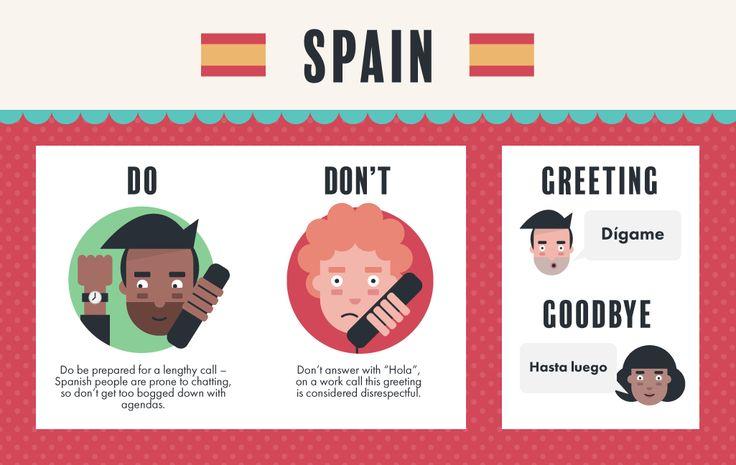In the dance of languages, where words sway and grammar pirouettes, few elements are as intriguing as the formal and informal tango of address. Across the world, languages grapple with this duality, morphing and twisting to the tune of cultural evolution. Spanish, with its rich tapestry woven through continents, offers a particularly fascinating glimpse into this phenomenon. The use of “usted”—the formal second-person singular pronoun in Spanish—has traditionally demarcated respect, distance, or social hierarchy in conversations. However, whispers and wonders abound: In contemporary Spain, does “usted” still command the same presence, or has it gracefully bowed out of the linguistic ballroom, leaving “tú” to lead the dance of dialogue? This exploration seeks to unearth whether Spaniards continue to embrace “usted” with the same fervor, or if societal shifts have encouraged a more informal mode of discourse. Through a kaleidoscopic lens, we invite you on a journey to discover the current status of ”usted” in the pulsating heart of Spain, where language meets culture in an ever-evolving embrace.
Unwrapping the Mystery of Usted in Modern Spain
In the vibrant tapestry of Spanish language and culture, the use of “usted” stands as a fascinating thread woven with respect and formality. Traditionally, this grammatical form has been the go-to choice for addressing elders, superiors, or individuals in professional contexts, indicating a level of respect or distance. However, as the whispers of modernity echo through Spain’s bustling streets and tranquil countryside, a subtle shift is observed. The Spanish language, ever so dynamic, reflects these changes, as “usted” finds itself in a delicate dance with informality and closeness that characterizes contemporary communication. Younger generations, in particular, often prioritize a more direct and personal connection, reserving “usted” for specific, clearly defined situations rather than everyday use.
| Context | Use of Usted | Remarks |
|---|---|---|
| In Business | Common | Especially with new clients |
| Among Friends | Rare | Reserved for teasing or irony |
| Family Settings | Varies | Typically not used, except for very formal or traditional families |
| Education | Decreasing | In universities, less common among peers and professors |
The intriguing evolution of “usted” does not signal its exit from the Spanish lexicon but rather highlights its selective application, a testament to the language’s adaptability and the society’s evolving social norms. Although less prevalent in casual, everyday conversations, particularly amongst the youth, “usted” retains its stronghold in formal settings. It’s a linguistic nod to professionalism and respect in business dealings, legal situations, and when addressing high-ranking officials. Educational environments present a mixed picture; while some teachers and professors may insist on its use to maintain a formal barrier, others encourage a more relaxed approach to foster open dialogue and approachability. Thus, “usted” remains a vibrant aspect of the Spanish language, its usage tailored by context, personal choice, and the changing tides of social interaction, embodying the delicate balance between tradition and modernity.
The Usted Dilemma: Navigating Formality in Spanish Interactions
In the labyrinthine dance of Spanish language and culture, the choice between “tú” and “usted” mirrors the nuanced interplay of respect, formality, and intimacy. Once deemed indispensable armor in the social etiquette arsenal, the “usted” form has seen its once towering stature gently eroded by the sands of time and social evolution. The dynamics of this shift are as varied as they are fascinating, reflecting broader cultural transformations within Spanish-speaking communities, particularly in Spain. While “usted” remains the go-to form in professional settings, legal matters, and when addressing elders or individuals in positions of authority, its use in day-to-day conversations, especially among the younger generation, is becoming more selective, echoing the informalization trends seen in many other languages and cultures around the world.
The matter of when and where to deploy “usted” versus “tú” can sometimes befuddle even native speakers, hinging as it does on a complex calculus of context, personal preference, and regional variation. For instance, while in some areas of Spain, the formal “usted” could be seen as a sign of respect and politeness, in others, it might be interpreted as unnecessarily stiff or distant. This regional diversity is showcased through casual interactions, where some might linger on the formal side of the spectrum, and others swiftly tip into the familiarity “tú” affords, regardless of the interlocutors’ age or stature.
<table class="wp-table">
<tr>
<th>Region</th>
<th>Preference for "Usted"</th>
<th>Preference for "Tú"</th>
</tr>
<tr>
<td>Madrid</td>
<td>Moderate</td>
<td>High</td>
</tr>
<tr>
<td>Andalusia</td>
<td>Low</td>
<td>Very High</td>
</tr>
<tr>
<td>Castile</td>
<td>High</td>
<td>Moderate</td>
</tr>
<tr>
<td>Catalonia</td>
<td>Varies*</td>
<td>High</td>
</tr>
</table>*The variation in Catalonia can be attributed to the bilingual nature of the region, influencing formal and informal address differently.
In conclusion, while the once clear-cut rules governing the use of “usted” continue to blur, navigating this terrain demands a sensitivity to the ever-shifting sands of language use and social norms. The “usted dilemma,” therefore, is far from a relic of the past; it remains a vibrant testament to the adaptability and rich diversity of the Spanish language and its speakers.
From Classrooms to Conversations: The Shifting Sands of Spanish Etiquette
The landscape of linguistic manners in Spain has evolved significantly over the years, casting shadows of change over the traditional use of the formal ‘usted’ form. Once a staple in educational institutions, professional settings, and polite conversation, ‘usted’ is now delicately balanced on the edge of modern Spanish communication. The shift has been so pronounced that many wonder if the formal address has retreated into the annals of linguistic history. Today’s Spain is a vibrant tapestry of regional dialects, where the threshold of formality is as varied as the landscapes. In cosmopolitan areas like Madrid and Barcelona, the casual ‘tú’ form flourishes amidst the hustle and bustle, while ‘usted’ maintains its stronghold in formal business interactions and in regions with a more traditional bent.
Understanding the dynamics of ‘usted’ in contemporary Spanish interactions is akin to navigating a socio-linguistic labyrinth. Below is a peek into the realms where ‘usted’ still commands respect:
- Regional Variations: In areas steeped in tradition like Castilla y León, ‘usted’ is part of the daily vernacular, a nod to the region’s historical gravitas. Conversely, in Andalusia, the warmth of the local dialect often embraces a more personal touch, favoring ‘tú’ even in semi-formal contexts.
- Age and Social Hierarchies: The elderly are often addressed with ‘usted’ as a form of respect. Similarly, in professional settings where hierarchy is pronounced, such as between a junior employee and a senior manager, ‘usted’ is still the norm.
While the winds of change have certainly swept through the Spanish language, ushering in a more relaxed approach to conversations, the formal ‘usted’ remains rooted in contexts where respect and tradition predominate. Its use may have become more selective, yet it is far from extinct, living on as a testament to the richness and diversity of the Spanish language.
Embracing Tú and Usted: Practical Recommendations for Language Learners
When treading the linguistic landscapes of Spain, navigating between the informal “tú” and formal “usted” pronouns can feel like a cultural tightrope. Although the modern Spanish vernacular is increasingly favoring “tú” for most conversational encounters, “usted” still holds a significant place in specific social contexts. Understanding when and how to use these pronouns is crucial for language learners who wish to communicate effectively and respectfully. Here are practical recommendations for those navigating these linguistic waters:
-
Assess the situation: “Usted” is traditionally reserved for formal occasions, interactions with senior individuals, or people in positions of authority. However, its usage can vary significantly across different regions of Spain. In more formal regions such as Castile and parts of Andalusia, “usted” may still be heard in everyday interactions among strangers or in business settings. Conversely, in casual environments or among younger crowds, particularly in cities like Barcelona or Madrid, “tú” is predominantly used, reflecting a more informal, contemporary social fabric.
-
Learn by observation: Immersing oneself in the local culture is the best way to grasp the nuanced use of “tú” and “usted”. Pay attention to how native speakers address each other in various settings – be it in cafes, professional meetings, or at social gatherings. Noticing patterns and contextual cues will gradually build your confidence in deciding which pronoun to use. Additionally, engage in practical exercises, such as role-playing scenarios, where you can practice switching between “tú” and “usted” based on the given social context. This method of learning through observation and practice can be incredibly effective.
| Context | Recommended Pronoun |
|---|---|
| Professional settings, formal occasions | Usted |
| Social gatherings with peers | Tú |
| Interacting with elders or authority figures | Usted |
| Casual encounters, friends, and most family | Tú |
Embracing both ”tú” and “usted” in your language toolkit enriches your ability to connect with others across a spectrum of social situations in Spain. By applying these practical recommendations, language learners can navigate the complexities of Spanish social etiquette with greater ease and cultural sensitivity.
To Conclude
As we meander through the linguistic tapestries that drape the bustling streets and tranquil countryside of Spain, the question of ‘usted’ remains gently perched on our lips. From the lively banter in vibrant marketplaces to solemn whispers in timeworn cathedrals, the usage of this formal address weaves its story into the very fabric of Spanish culture. The dance between tradition and modernity continues, with ‘usted’ stepping gracefully to the ever-evolving rhythm of Spanish society.
Are we witnessing the final bow of ‘usted’ on the grand stage of linguistic evolution, or is it merely transforming, finding new spaces to inhabit in the hearts of those who navigate the complexities of respect, formality, and intimacy? The answer, it seems, is as diverse as the land itself, a mosaic of perspectives that reflect the richness of Spain’s linguistic heritage.
In essence, the journey of ‘usted’ through the annals of time serves as a mirror, reflecting broader shifts in social norms, values, and the eternal quest for connection. Whether its usage fades into the whispers of history or adapts to the changing pulse of society, ‘usted’ remains a testament to the vibrant, ever-changing tapestry of human interaction.
So, as we bid adieu to this exploration, we are left with a deeper understanding of not just a word, but a window into the soul of Spain — a nation forever dancing on the delicate line between reverence for the past and the unbridled embrace of the future.




